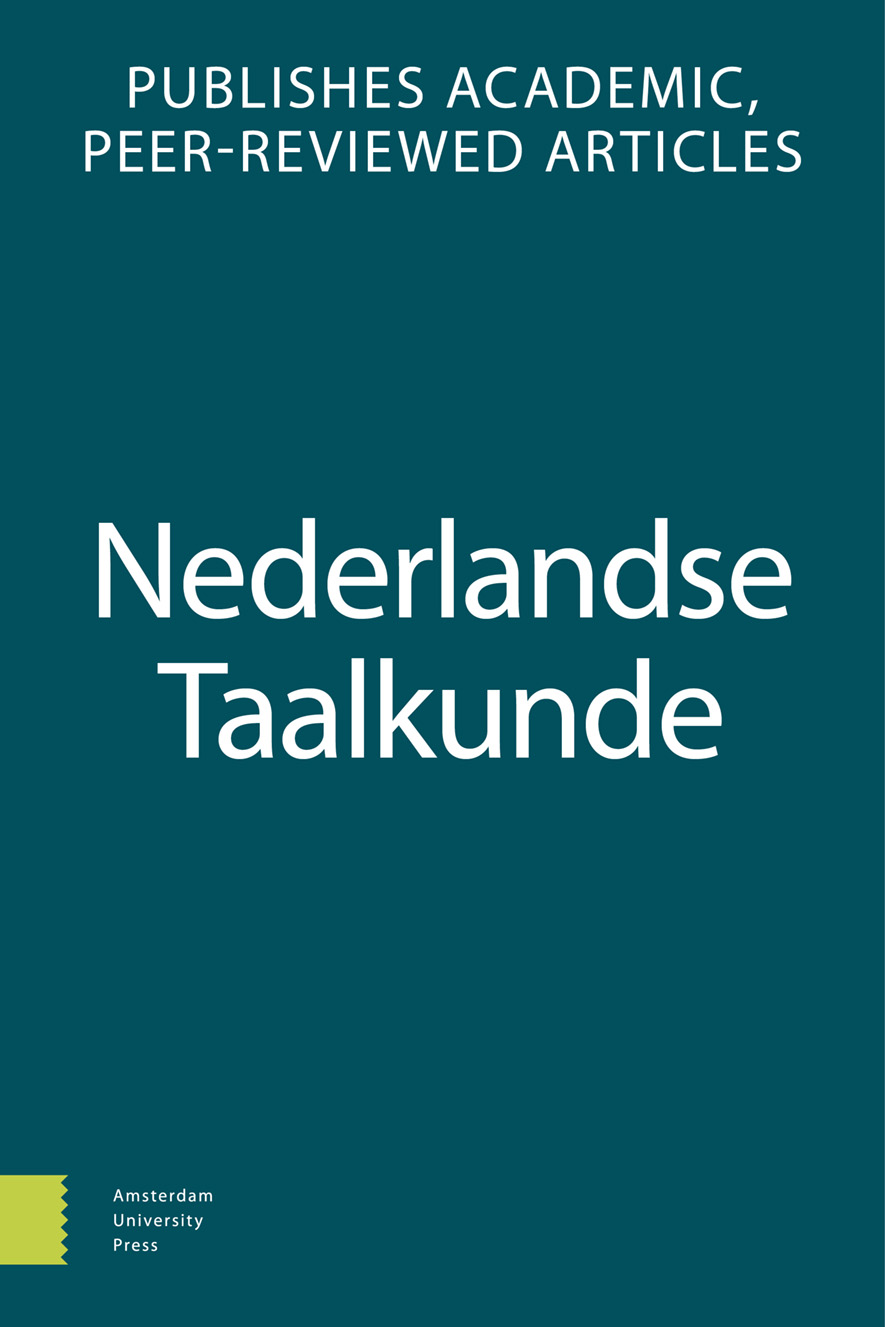- Home
- A-Z Publications
- Nederlandse Taalkunde
- Previous Issues
- Volume 18, Issue 1, 2013
Nederlandse Taalkunde - Volume 18, Issue 1, 2013
Volume 18, Issue 1, 2013
-
-
De integratie van Engels in Vlaamse jongerentaal kwantitatief en kwalitatief bekeken: das wel nice! :p
More LessAuthors: Benny De Decker & Reinhild VandekerckhoveThe paper focuses on the presence of English in a written chat corpus produced by Flemish adolescents in their late teens whose native language is (a variety of) Dutch. Topics include the relative presence of lexemes and word categories, the effect on the target language (Dutch) and the way the loans are integrated into the chatspeak of the teenagers, i.e. (g)localisation processes. In quantitative terms, the impact of English on the informal ‘speech’ of Flemish teenagers appears to be considerable, but the borrowing process is not a ‘copy-and-paste’ practice. In many cases the teenagers transform the English words graphematically, morphologically and/or semantically. By using an extensive and reliable corpus and by quantifying and categorizing the English tokens in several ways, this paper offers a representative case study for the appropriation of English by a generation whose socialization process partly proceeds via electronic media.
-
-
-
Feiten en fictie - Taalvariatie in Vlaamse televisiereeksen vroeger en nu
More LessAuthors: Sarah Van Hoof & Bram Vande kerckhoveThis article presents a comparative corpus analysis of the language variation in Flemish TV fiction series broadcast around 1980 and in the late 2000s, in order to assess the oftenheard claim that the use of Standard Dutch in TV fiction has decreased in favor of so-called tussentaal, an ‘intermediate’ variety. Using mixed-effects logistic regression, we assessed the effect of period on the use of 7 tussentaal markers in 21 old and recent series. Because these markers do not uniquely identify tussentaal but can also indicate dialect use, we included estimates of the speakers’ dialect use as a covariate. Rather than evidencing a straightforward decrease of the use of Standard Dutch in favour of tussentaal, our results indicate that the linguistic spectrum in TV fiction has been reduced over a period of 30 years time. Whereas language use around 1980 ranged from Standard Dutch to dialect, in present-day series a ‘cleaned up’ variety of tussentaal, differing maximally from both Standard Dutch and dialect, prevails.
-
-
-
Football wordt voetbal - De vroegste geschiedenis van voetbalvocabulair in het Nederlands – lexicologie, fonologie, morfologie
More LessAuthor: Wim ZonneveldFootball (soccer), the current number one sport practised in the Netherlands, was introduced into Dutch sports and educational culture in the final two decades of the 19th century, as one of the manifestations of a continental literary, cultural and political ‘anglomania’. This event implied new vocabulary, the introduction of which into Dutch is traced in this article. Investigating previous turn of the century football vocabulary in loanword research is motivated by the conveniently large size of the new lexicon. Moreover, differently from other sports, football quickly started to lose its elite character, implying a relatively wide range of speakers, of sociolinguistically diverse backgrounds. The new (2010) online ‘Royal Library’ newspaper website is used as a source of considerably extended and improved lexicological data of Dutch. Phonological and morphological patterns of foreign vocabulary introduction are outlined, showing that and where adopting loanwords may have been beneficial to Dutch phonotactics, and how creative morphology was applied in developing native variants.
-
-
-
The syntactic analysis of the Dutch absentive construction
More LessAuthor: Hans BroekhuisThis squib discusses Dutch absentive constructions like Jan is vissen ‘Jan is off fishing’. The literature on this construction so far has mainly paid attention to the meaning of the construction. This paper focuses on the syntactic analysis; two competing approaches will be compared according to which the verb zijn is, respectively, a copular verb and an auxiliary verb. It will be shown that the latter approach is the correct one.
-
Volumes & issues
Most Read This Month

Most Cited Most Cited RSS feed
-
-
Goed of fout
Authors: Hans Bennis & Frans Hinskens
-
- More Less

